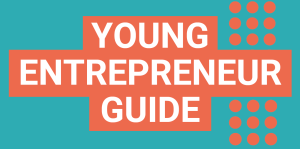
Growing your business online
Establishing an online presence can take various forms, but to simplify, do you have a website?
If you are looking to sell online, that’s where you should start. Websites serve as digital shop windows, going beyond displaying products or services. Investing in a website can help you attract and connect with customers, build trust and credibility, and stand out from competitors.
There are different ways to get a website for your business. You can hire a specialist agency to create a brochure or e-commerce site. Alternatively, you can build your own using free or low-cost online options, depending on your technical skills. Existing e-commerce websites are also available, allowing you to list products or launch an online store. Your choice depends on your objectives, budget, and target audience.
Define your target audience
Define your goals and understand your audience before diving into online marketing. Creating buyer personas, fictional characters with characteristics similar to your customers, helps tailor your marketing campaigns.
Research your audience through tools like Google Analytics or by observing social media behaviours. If unsure, ask your staff or directly survey your customers. Questions could cover demographics, career, lifestyle, pain points, objectives, and media preferences.
Next, create a marketing strategy.
Armed with all that research, you can now start considering how to advertise to and create content for your target audience. This marks the beginning of your digital marketing strategy and the growth of your business online.
While some businesses focus on inbound or outbound marketing, many more use a combination of the two. But what are inbound and outbound marketing? What do they look like? And how can these strategies benefit your business?
Inbound marketing acts as a magnet. This approach relies on high-value content to attract your audience, meeting their needs, nurturing lasting relationships, and investing in long-term lead generation (turning your audience into customers).
Inbound marketing can help build trust and credibility with your audience, but it requires a significant amount of time and resources. You’ve likely encountered inbound marketing in the form of blogs, downloadable ebooks, opt-in emails, and organic social media.
Outbound marketing operates like a megaphone. This approach relies on advertising, being interruptive, and placing your products or services in front of your target audience to secure a sale. Unlike inbound, it’s not a long-term commitment.
With the right approach, you can achieve almost immediate results, but success depends on the persuasiveness of your advertising. Outbound marketing is evident in TV ads, billboards, YouTube ads, and sponsored social media posts.
In addition to considering the types of inbound and outbound marketing that could benefit your business, you also need to assess the sustainability of these channels. Creating content for inbound marketing takes time, but don’t be deceived into thinking outbound marketing is quicker. Managing and adjusting paid social campaigns, creating graphics for ads, and budgeting are also time-consuming (unless you’re outsourcing – in which case, you’ll need to consider the costs).
Learn more
Get some tips on how to set a marketing budget
See what different digital channels you can use to grow your business online
Choosing your online marketing channels
To help you make the right choices for your business, let’s go over some of the options available to you. It’s important to consider the pros and cons for each marketing channel and whether the channel is a good fit with your target audience. Email marketing There’s often confusion about whether email is inbound or
The legal requirements for starting a business
The legal requirements for starting a business can seem intimidating...
How to write a good business plan
Organisations such as the Start-Up Loan Company...
Leadership Coaching: Becoming The Leader You Want To Be
In this article, Halina will explore the challenges facing leaders and how leadership coaching can help.
Understanding What Makes Employees Tick and Building a Thriving Business
In this article, we will explore the importance of understanding what makes employees tick and how it contributes to building a thriving business.
How to create a profitable website and generate leads
Learn how to create a profitable website that can serve as a powerful tool to attract customers, generate leads, and increase revenue.
How to Sell Goods or Services to the Public Sector
Increase your customer base and increase revenue by learning how to successfully sell goods or services to the public sector with our expert advice.
Four issues key to social enterprise survival
Social enterprises face a unique and complex series of issues. To ensure the long-term health and survival of your social enterprise, an understanding of these issues is vital. In this article, I will summarise four key areas you need to consider: sources of funding, governance considerations, the power of people, and sustainable growth.
Peer to peer lending Q&A
Looking for an alternative route to financing your business? Peer to peer (P2P) lending is one of the options.
Horizon Scanning: Four questions social enterprises need to answer
With so much going on in the present, it’s not always easy to look to the future. However, the identification of potential risks and opportunities is vital to the long-term health of any business, and social enterprises are no different. Horizon scanning helps in assessing whether you are adequately prepared for future changes or threats.
How has the Growth Hub helped people do business?
At the York & North Yorkshire Growth Hub, we’re supporting businesses to start, grow and scale – find out how our programmes, partnerships and teams have helped.
Talking Net Zero: Why does the accuracy of words matter to your business?
Do you understand the key climate change terms every business should know? Get to grips with net zero terminology and learn how you can use it to your advantage with our free resources.
Young Entrepreneur Guide
Do you have a business idea? Or do you want to work for yourself? Then the Young Entrepreneur Guide is here to help you!














